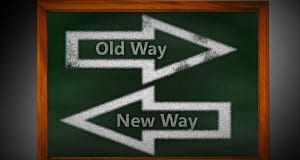4 Ways Entrepreneurs Can Improve Their Business With Agile Marketing

Agile boosts discipline and communication
“Discipline” and “process” are two words seldom used by entrepreneurs. Yet, startups and small businesses can grow faster – and more predictably – with some discipline and just the right amount of process. And that’s where Agile’s methodologies come in.
When everyone in your business is running around like Usain Bolt at a Black Friday sales event, they’ll all benefit from Agile’s 15-minute morning meetings to talk about what they did yesterday, what they’re going to get done today, and what’s blocking their progress.
If you’re a solopreneur, answering these questions for yourself is a good way to take stock of each day’s progress and challenges. The Agile term for this 15-minute session is the daily standup.
Weekly planning sessions, and the use of whiteboards for tracking work, can also help entrepreneurs and their teams prioritize and track the progress of critical work, allowing everyone to see at a glance what’s getting done and what’s not. In the Agile world, these techniques are known as Sprint planning and Kanban boards.
Spending a few minutes at the end of each week to look at what’s working and what’s not, and trying new ways of working, also has an Agile name: the retrospective.
Whatever you call these processes, they’ll add discipline and structure to your startup or small business, and they’ll ensure you’re getting the right things done each and every week.
Agile grows your business faster
The two most precious resources of any startup or small business are time and seed capital. How can you maximize these investments? Through an Agile discipline called validated learning.
Many entrepreneurs take the “throw spaghetti against the wall and see what sticks” approach to marketing. But with Agile, you’ll use validated learning to think like a scientist: Who are my best customers? Where do they get their information? Why do they buy from me? What experiment can I run to confirm my best-guess answers to these questions?
Scientists call best-guess answers hypotheses, and you’ll be testing your hypotheses through validated learning.
Rather than throwing $20,000 at Facebook advertising, for example, and hoping it will produce some sales, you’ll run a small test for $500 or $1,000. Only when you know that your advertising is working will you spend your full budget.
How do you decide which experiments to run? I recommend a simple framework called ICE:
- I stands for the impact a successful experiment could have on your business.
- C stands for your confidence that the experiment will be a success.
- E stands for how easy (or hard) it will be to run the experiment or promotion.
Assign a value from 1 to 5 for each experiment along each dimension – I, C, and E – and then calculate the score as the total of the three scores. Run the experiments with the highest scores first.
Agile helps you adapt to change quickly
Every entrepreneur is encouraged to write a business plan. “Where’s your business plan?” asks the banker. Yet, as every entrepreneur knows, business plans and marketing plans quickly become outdated. You can’t update them frequently enough to keep up with the daily pace of your business.
I recommend a different Agile-themed approach: napkin plans. Write your business plan on a napkin (or a single sheet of paper) and update it often.
Napkin plans work because they’re:
- Short
- Visual
- The product of talking to prospects and customers
- Updated frequently based on feedback and changing conditions
Agile creates remarkable customer experiences
Rather than buying products, many people today are buying experiences. Think about it. When someone buys an Apple product, whether it’s an iPhone, a Mac, or an Apple Watch, are they really buying the product, or are they buying the Apple experience?
Sure, not everyone loves Apple. That’s OK. But those who do love Apple pay premium prices, buy anything they make, are incredibly loyal, and can’t remark enough about the experiences they have with Apple products.
How do you create your own remarkable experiences? You have to know your best customers better than anyone else and go above and beyond satisfying the needs of those customers who will ultimately become your biggest fans. And Agile marketing can help with that.
About the Author














Leave a Reply
Want to join the discussion?Feel free to contribute!